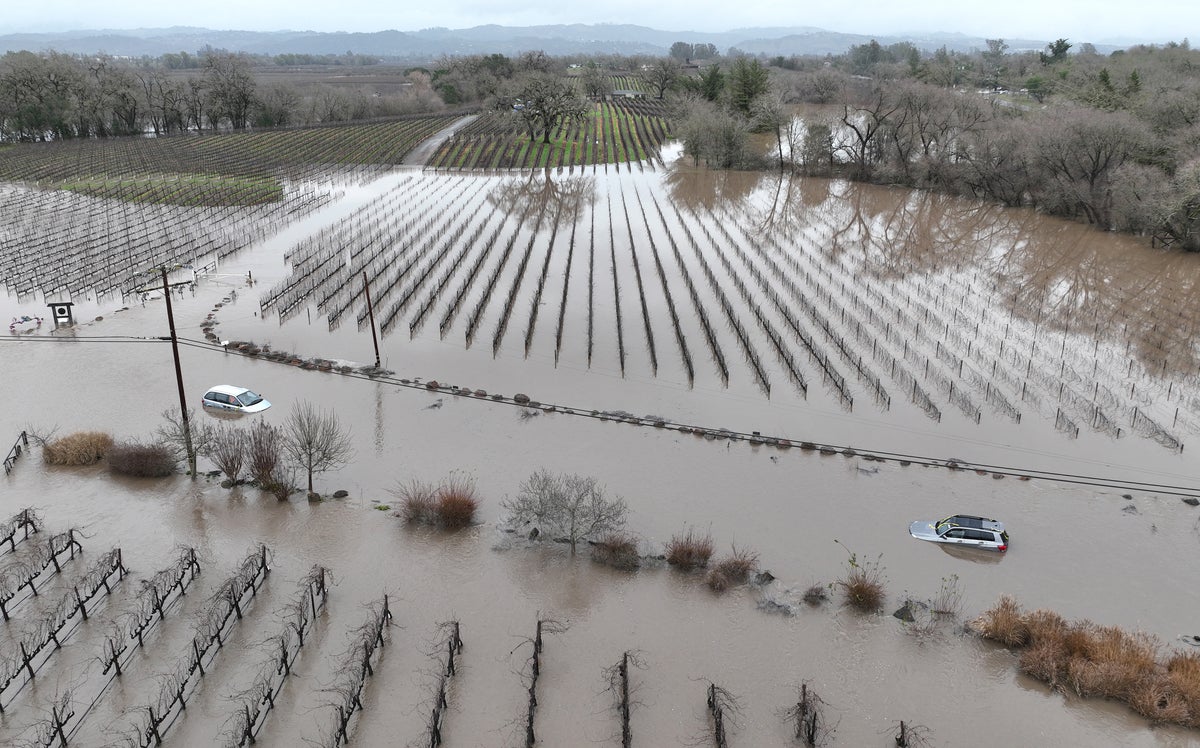Coming into this winter, California was mired in a three-year drought, with forecasts offering little hope of relief anytime soon. Fast forward to today, and the state is waterlogged with as much as 10 to 20 inches of rain and up to 200 inches of snow that have fallen in some locations in the past three weeks. The drought isn’t over, but parched farmland and declining reservoir levels have been supplanted by raging rivers and deadly flooding.
The National Oceanic and Atmospheric Administration’s Climate Prediction Center (CPC) issues seasonal forecasts of precipitation and temperature for one to 13 months into the future. The CPC’s initial outlook for this winter, issued on Oct. 20, favored below-normal precipitation in Southern California and did not lean toward either drier- or wetter-than-normal conditions in Northern California.
However, after a series of intense moisture-laden storms known as atmospheric rivers, most of California has seen rainfall totals 200 to 600 percent above normal over the past month, with 24 trillion gallons of water having fallen in the state since late December.
The stark contrast between the staggering amount of precipitation in recent weeks and the CPC’s seasonal precipitation outlook issued before the winter, which leaned toward below-normal precipitation for at least half of California, has water managers lamenting the unreliability of seasonal forecasts.
“You have no idea come Dec. 1 what your winter is going to look like because our seasonal forecasts are so bad,” said Jeffrey Mount, a senior fellow with the Public Policy Institute of California’s Water Policy Center, in an interview. “They are just not reliable enough to make definitive water supply decisions.”
https://www.washingtonpost.com/weather/2023/01/15/california-seasonal-forecasts-noaa-missed/
But they know for dead certain that temperatures are rising 5 degrees in the next 100 years and the oceans are going to rise 10 to 20 feet by the end of the century.

The National Oceanic and Atmospheric Administration’s Climate Prediction Center (CPC) issues seasonal forecasts of precipitation and temperature for one to 13 months into the future. The CPC’s initial outlook for this winter, issued on Oct. 20, favored below-normal precipitation in Southern California and did not lean toward either drier- or wetter-than-normal conditions in Northern California.
However, after a series of intense moisture-laden storms known as atmospheric rivers, most of California has seen rainfall totals 200 to 600 percent above normal over the past month, with 24 trillion gallons of water having fallen in the state since late December.
The stark contrast between the staggering amount of precipitation in recent weeks and the CPC’s seasonal precipitation outlook issued before the winter, which leaned toward below-normal precipitation for at least half of California, has water managers lamenting the unreliability of seasonal forecasts.
“You have no idea come Dec. 1 what your winter is going to look like because our seasonal forecasts are so bad,” said Jeffrey Mount, a senior fellow with the Public Policy Institute of California’s Water Policy Center, in an interview. “They are just not reliable enough to make definitive water supply decisions.”
https://www.washingtonpost.com/weather/2023/01/15/california-seasonal-forecasts-noaa-missed/
But they know for dead certain that temperatures are rising 5 degrees in the next 100 years and the oceans are going to rise 10 to 20 feet by the end of the century.





